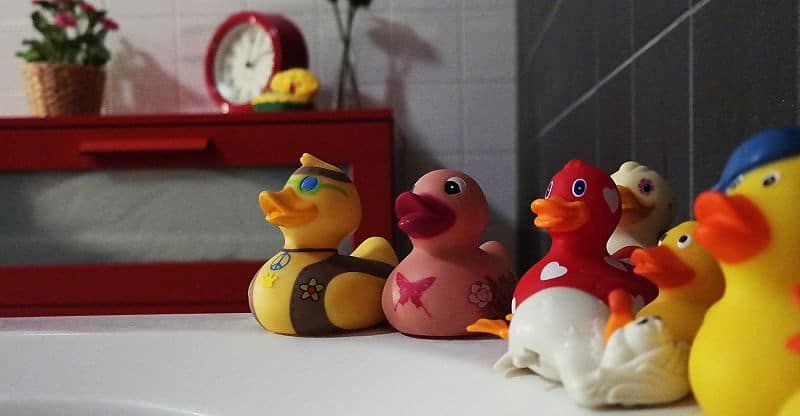Navigating Transition Times
★★★★☆

Every object, said Mr. Newton, tends to remain at rest, or to continue in a straight line until compelled to change by external forces. The same is true of children, who have an inordinate fondness for continuing to do what they are already doing.
What external forces are effective in transitioning children peacefully from one activity to another?
With people of any age, routine and structure create a safe space in which changes can occur. For example, when naptime normally happens around 1:00, and is usually accompanied by a book, a familiar bed, and a favorite blanket, it is less upsetting than if it occurs whenever Mom reaches the end of her rope. If a teacher says, one Tuesday morning at random, “Let’s clean the school!” more than one child will be growling. But regular cleaning on Friday afternoons before dismissal? Sure, we know what to do. The routine itself is a comfort in the midst of a disliked task.
Advance warning also helps prepare children for changes. Even as an adult, I’d be put out if someone walked into my kitchen and said, “Alright, stop cooking dinner. It’s time to go.” Go? Go where? I’m busy here, and I’m not finished. Preparing children for what’s coming next, before it comes, preempts a good half of their resistance. Preparation may be verbal (“you have three more minutes of library time”) or simply physical (we pack our book bags and put on our jackets for dismissal).However, there are times when transitions are unplanned and out of the ordinary. A child may need to leave school unexpectedly. A collision on the playground may lead to an abruptly shortened recess. What then?
Offering assignments to all principal players is a useful trick for transitions. These three children must gather recess equipment to put away, one must help another with a handicap, and the rest must line up quietly by the door. Getting them busy quickly, as part of a team, prevents the rogue behaviors that can arise from uncertainty or upheaval. Give your most active child your most engrossing task. Responsibility is generally sobering.*Leaders of a group in transition need to keep moving forward. Transitions are rarely the time for conversations about why we are doing what we’re doing, and what else one child’s grandma did last night. Whether consciously or unconsciously, children can sabotage transition times by remembering everything important they’ve been holding in for hours. Parents and teachers walk a careful path between two mires: ignoring real needs on the one hand and getting wadded up in minutia on the other. But they need to walk. Forward. With confidence.
Staying present also smooths transition times. Joining is better than sending. We hold hands, we line up single file, we march two by two, but we do it together. Let’s go.Finally, once a transition is past, praising children for their flexibility and prompt cooperation (we hope) builds good feelings, and cements their skills for later. Reflect with them on how it went. What did we learn for next time? Thank the child who quietly picked up the piece that everyone else forgot.
Though it takes effort and focus, guiding those straight lines to bend in tandem toward a new direction is awfully rewarding. What other tricks do you know for navigating transition times?
*The author is not responsible for accidents if this piece does not work out for you. It’s more of a proverb.Related Items
Leave a Reply
Feedback